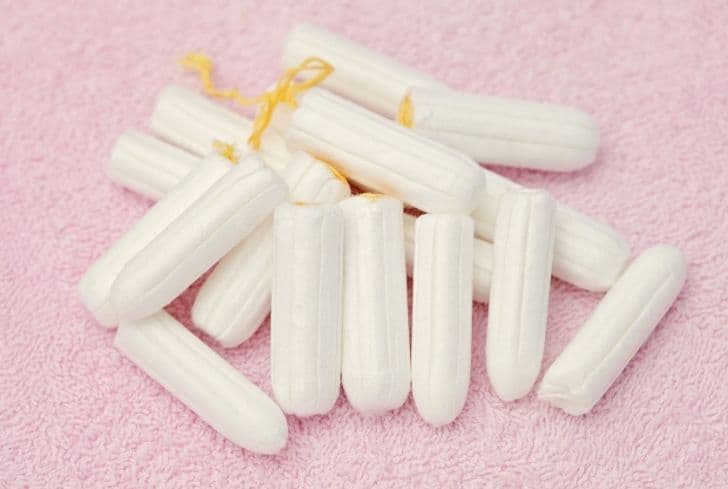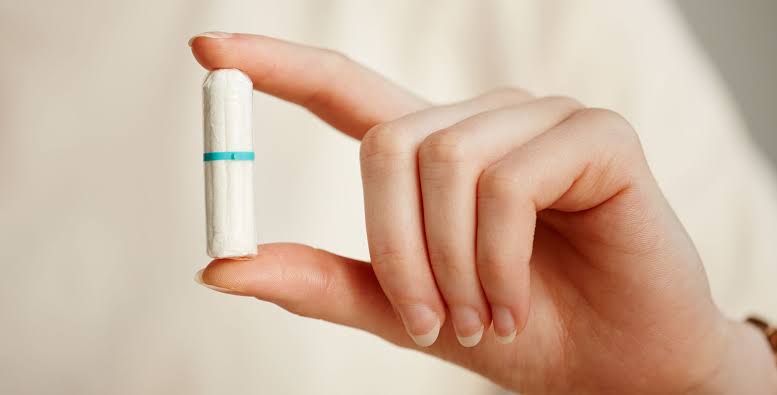When it comes to tampons, there are a few things to consider. The cotton portion of tampons may biodegrade, but what about the synthetic fibers? And what about the plastic applicators? Are they biodegradable too? We’ll uncover the truth behind these questions and help you make an informed decision about your menstrual products. Whether you’re a tampon user or just curious about the environmental impact of feminine hygiene products, this article will provide you with the answers you’re looking for.
Contents
- 1 Are Tampons Biodegradable?
- 2 The Problem with Non-Biodegradable Tampons
- 3 Benefits of Using Biodegradable Tampons
- 4 Conclusion
- 5 Frequently Asked Questions
- 5.1 Will using biodegradable tampons help the environment?
- 5.2 Are biodegradable tampons made from natural and organic materials?
- 5.3 Do biodegradable tampons have sustainable packaging?
- 5.4 How long does it take for biodegradable tampons to decompose?
- 5.5 Can biodegradable tampons be flushed down the toilet?
Are Tampons Biodegradable?

Understanding Biodegradability
When it comes to understanding whether tampons are biodegradable, it’s important to know what exactly biodegradability means. In simple terms, a product is considered biodegradable when it can break down and return to nature through the actions of bacteria and other organisms. It is about the ability of a material to decompose over time.
Biodegradability of Tampons
It’s crucial to note that tampons are typically made up of two main components – cotton and synthetic fibers. While the cotton portion of a tampon can biodegrade, the synthetic fibers will not biodegrade or will take a significantly longer time to do so. Moreover, the plastic applicators commonly used for tampons are not biodegradable either.
It’s worth mentioning that tampon applicators made from cardboard are an exception and will biodegrade. Therefore, if you’re looking for biodegradable tampons, make sure to check the packaging for specific labeling indicating their biodegradability. If a tampon is not labeled as biodegradable, it is safe to assume that it is not.
Proper Disposal
When it comes to disposal, it’s important to remember that tampons should never be flushed down the toilet, even if they are biodegradable. This is because the plastic barrier surrounding the tampon prevents it from decomposing easily when sealed in plastic. Instead, it is recommended to remove the tampon and wrap it in paper, tissue, or a tampon wrapper before disposing of it in the designated waste bin.
Consider Organic Tampons
If you are concerned about the biodegradability of tampons and the potential impact on the environment, you may want to consider using organic tampons. Organic tampons are made from materials such as organic cotton and other natural materials. They are free from chemicals like pesticides that can be harmful to both your body and the environment. As such, they are biodegradable and can decompose over time.
While not all tampons are biodegradable, options such as organic tampons offer a more environmentally friendly alternative. When it comes to proper disposal, it is important to follow the recommended guidelines and dispose of tampons in the designated waste bin. By making informed choices, you can contribute to a more sustainable future.
The Problem with Non-Biodegradable Tampons
Accumulation of Waste in Landfills
Non-biodegradable tampons, which are made primarily of synthetic materials like rayon and plastic, pose a significant problem when it comes to waste accumulation in landfills. In fact, a staggering 97% of tampons on the market today are made of rayon or non-organic cotton, both of which are non-biodegradable materials.
Over a lifetime, the average woman uses around 11,000 tampons, generating approximately 400 pounds of period product packaging waste. This immense amount of waste, combined with the slow decomposition rate of synthetic materials, contributes to the 200,000 tonnes of period waste generated in the UK each year. When these non-biodegradable tampons end up in landfills, they can take as long as 20 years to break down. As they sit in landfills for years, they not only occupy valuable space but also release toxic substances into the environment.
Pollution of Water Bodies
The improper disposal of non-biodegradable tampons can lead to pollution of our water bodies, posing a serious threat to aquatic life and delicate ecosystems. When non-biodegradable tampons are flushed down the toilet, they can end up in our rivers, lakes, and oceans. In fact, studies conducted by the Women’s Environment Network (WEN) found that 10% of sewage-related debris collected from beaches in 2020 consisted of period pads, tampons, and applicators.
The slow decomposition rate of synthetic materials like rayon and plastic means that tampons can persist in marine environments for up to 20 years, causing potential harm to marine animals. Tampons can be mistakenly ingested by marine life, leading to health complications and even death. To make matters worse, the chemicals used in tampons, such as dioxin chlorine and rayon, can also seep into the groundwater and further contribute to pollution.
To mitigate the pollution caused by non-biodegradable tampons, it is essential to consider more sustainable alternatives. Opting for tampons made from natural materials like organic cotton or bamboo can help reduce the environmental impact, as these materials are often compostable and pose fewer risks to ecosystems. Additionally, it’s important to dispose of tampons properly by wrapping them in paper or tissue before throwing them in designated waste bins, instead of flushing them down the toilet.
By understanding the problem with non-biodegradable tampons and making informed choices, you can contribute to a more sustainable future and help protect our environment. Remember, even small changes in our daily habits can make a significant difference in preserving our planet for future generations.
Benefits of Using Biodegradable Tampons

Reduced Environmental Impact
Switching to biodegradable tampons can have a significant positive impact on the environment. Unlike non-biodegradable tampons, which can take hundreds of years to decompose, biodegradable tampons break down naturally, reducing the accumulation of waste in landfills. This means less strain on our already overwhelmed waste management systems.
Moreover, when non-biodegradable tampons are improperly disposed of, they can end up in rivers, lakes, and oceans, causing pollution and harm to aquatic ecosystems. Biodegradable tampons, on the other hand, are much less likely to contribute to water pollution since they break down naturally without releasing harmful toxins.
Supporting Sustainable Practices
By using biodegradable tampons, you are supporting sustainable practices in various ways.
Firstly, biodegradable tampons are often made from natural and organic materials, such as organic cotton or bamboo, which are grown without the use of harmful pesticides or synthetic materials. This means that no harmful chemicals or toxins are being introduced into your body during your period.
Additionally, the production of non-biodegradable tampons often involves the use of fossil fuels and other non-renewable resources. By choosing biodegradable options, you are reducing your dependence on these resources and promoting a more sustainable and environmentally friendly approach to period care.
Furthermore, some biodegradable tampon brands also prioritize sustainable packaging and supply chain practices. They may use recycled or recyclable materials for packaging and partner with carbon-neutral companies for logistics, minimizing their overall environmental impact.
Making the switch to biodegradable tampons offers numerous benefits, including reduced environmental impact and support for sustainable practices. By choosing biodegradable options, you can make a positive contribution to preserving the environment and promoting a more eco-friendly approach to period care.
Conclusion
By switching to biodegradable tampons, you can make a positive impact on the environment. These tampons are designed to break down naturally, reducing waste accumulation in landfills and minimizing water pollution. In addition to being eco-friendly, biodegradable tampons support sustainable practices by using natural and organic materials. This helps to reduce our dependence on non-renewable resources.
Furthermore, many biodegradable tampon brands prioritize sustainability throughout their supply chain, including sustainable packaging options. This means that not only are you taking care of your own health, but you are also contributing to a more sustainable future.
Overall, making the switch to biodegradable tampons offers numerous benefits. You can reduce your environmental impact and support sustainable practices in period care. So, why not make a small change that can have a big impact? Choose biodegradable tampons and make a difference today.
Frequently Asked Questions
Will using biodegradable tampons help the environment?
Yes, using biodegradable tampons can have a positive impact on the environment. Biodegradable tampons break down naturally over time, reducing waste accumulation in landfills and minimizing water pollution.
Are biodegradable tampons made from natural and organic materials?
Yes, biodegradable tampons are often made from natural and organic materials. They prioritize sustainable practices, using materials that are free from chemicals and pesticides, reducing dependence on non-renewable resources.
Do biodegradable tampons have sustainable packaging?
Some biodegradable tampon brands prioritize sustainable packaging. They use eco-friendly materials and aim to minimize waste in their packaging and supply chain practices.
How long does it take for biodegradable tampons to decompose?
The time it takes for biodegradable tampons to decompose varies, but generally, they can disintegrate in around 6 months. This is significantly shorter than conventional tampons which can take up to 800 years to decompose.
Can biodegradable tampons be flushed down the toilet?
No, biodegradable tampons should not be flushed down the toilet. Flushing tampons, whether biodegradable or not, can cause plumbing problems and environmental damage. It is best to dispose of them in a compost bin or with regular household waste.
I am a medical student with experience and interest in Women’s health and well-being.